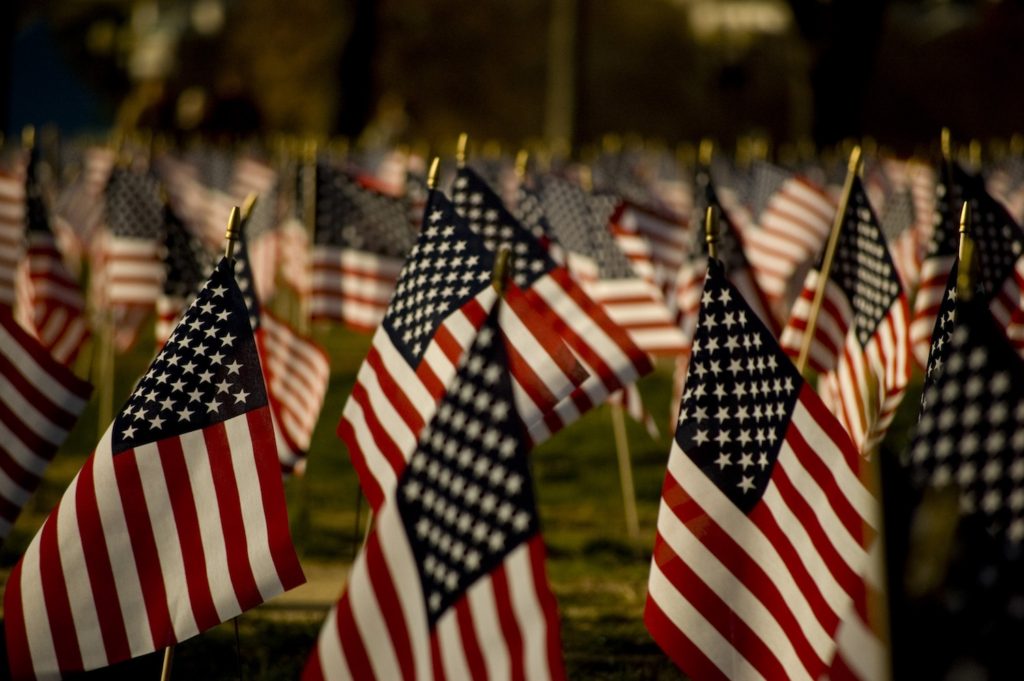The origins of the Pledge of Allegiance are found in the “flag movement” of the 1880s. During the Civil War, people suspected of disloyalty were often arrested, but were pardoned if they submitted to an “oath of allegiance” swearing to “support, protect and defend the Constitution and Government of the United States against all enemies, whether domestic or foreign,” and to “bear true faith, allegiance, and loyalty to the same.” Decades later, there was a desire among many Americans for citizens to demonstrate their respect for the flag.
The pledge of Allegiance that is recited across the country was written in its original form in August of 1892 by a Socialist Minister named Francis Bellamy.
However, the first pledge was created in 1885 by Captain George T. Balch, a West Point graduate and a veteran of the Civil War. Balch was a proponent of teaching children, particularly immigrant children, loyalty to the United States. He even wrote a book on the subject, titled Methods of Teaching Patriotism in the Public Schools, and collaborated with the U.S. Government and private organizations to distribute flags to every classroom.
Balch’s pledge, which was recited along with Bellamy’s until the 1923 National Flag Conference, read:
“We give our heads and hearts to God and our country; one country, one language, one flag!”
Francis Bellamy was a Christian socialist who “championed ‘the rights of working people and the equal distribution of economic resources,’” which he believed was inherent in the teachings of Jesus.
Bellamy offered public education classes with topics such as “Jesus the socialist,” “What is Christian Socialism?” and “Socialism versus anarchy.”
Bellamy held what could be construed as both xenophobic and racist views on immigration. He wrote in the editorial of The Illustrated American, Vol. XXII, No. 394, p. 258: “[a] democracy like ours cannot afford to throw itself open to the world where every man is a lawmaker, every dull-witted or fanatical immigrant admitted to our citizenship is a bane to the commonwealth.” And further: “Where all classes of society merge insensibly into one another every alien immigrant of inferior race may bring corruption to the stock. There are races more or less akin to our own whom we may admit freely and get nothing but advantage by the infusion of their wholesome blood. But there are other races, which we cannot assimilate without lowering our racial standard, which should be as sacred to us as the sanctity of our homes.”
In his last lecture, Bellamy called for a strong government and declared that only a socialist economy could allow both the worker and the owner to practice the Golden Rule.
In 1891, Bellamy was removed from his Boston pulpit for preaching against the evils of “gilded capitalism.” His career as a minister came to an end because of his propensity to characterize Jesus as a socialist. Today, Bellamy is considered an early American Democratic Socialist.
In October 1888, the Youth’s Companion, a children’s magazine, started running advertisements selling flags, and by 1892, the magazine had sold U.S. flags to over 25,000 schools throughout the country.
In 1890 it sponsored an essay contest for students on the topic, “The Patriotic Influence of the American Flag When Raised over the Public School.” The winner from each state would receive a large flag for his or her school. James B. Upham, the head of the magazine’s promotional department had the idea of using the 400th anniversary of Christopher Columbus reaching the Americas in 1492 to boost the schoolhouse flag movement. A flag salute was to be part of the official program.
Bellamy, who had been hired by magazine owner Daniel Sharp Ford, was recruited to write a new pledge for the occasion. He initially thought about incorporating the French Revolution motto “Liberty, Equality, Fraternity.” Using that as a model, Bellamy penned the prose that later became known as The Pledge of Allegiance. It read: “I pledge allegiance to my flag and the republic for which it stands, one nation, indivisible, with liberty and justice for all.”
He felt the use of his pledge in schools was key to instilling loyalty to America.
The recital was accompanied by a salute to the flag known as the “Bellamy Salute,” in which the right hand is fully extended, palm-out. With the rise of fascism and the onset of World War II, it was felt that the salute too closely resembled the Nazi salute, so it was replaced with simply placing the right hand over the heart.
Bellamy later revised the pledge to include the word “to” in front of “the Republic” to improve the cadence of the oath.
In 1923, the National Americanism Commission held a flag conference in Washington and adopted the Bellamy Pledge as the Pledge to the Flag, while at the same time changing “my” flag to “the” flag, and adding “of the United States” after the word flag. In 1924, the group again appended the language adding “of America” after “United States.” It was reported that Bellamy was unhappy with these changes, stating that it ruined the rhythm of the pledge.
In 1954, at the height of the “Red Scare,” Congress inserted “under God” into the pledge. This was seen as a crucial component in the battle against “godless” Communism. The same anti-communist fervor that resulted in adding “under God” to the pledge also led the country in 1956 to adopt a new motto, “In God We Trust.”
The Pledge of Allegiance and the motto, “In God We Trust” are two examples of the origination of tradition in the American way of life. The U.S. Constitution, which was ratified in 1787, specified no pledge, motto, or national anthem.
The trauma of the Civil War and the perceived menace of immigration were the catalysts for creating these and many other traditions for the sole purpose of fostering national identity and inculcating patriotism.











